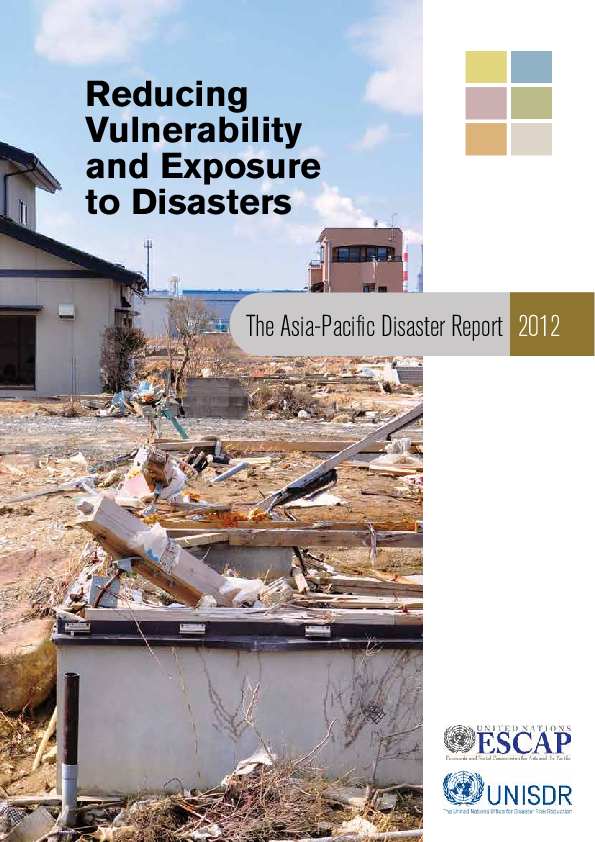
Reports
Reducing Vulnerability and Exposure to Disasters. The Asia-Pacific Disaster Report 2012
Publication year:
2012
English
Format:
pdf (5.4 MiB)
Publisher:
UNESCAP, United Nations Economic and Social Commission for Asia and the Pacific,UNISDRAP, United Nations Office for Disaster Risk Reduction for Asia and Pacific
The primary conviction of this report is driven by a concern that people’s exposure and vulnerability, experienced individually and collectively, continue to be twin challenges for the Asia-Pacific region. Faced with growing economic losses and increasingly vulnerable populations, this report has analyzed the drivers of risks and the strategies that are in place to deal with the growing risks. The report has pursued three primary questions that all dedicated collaborators in the region need to join, “How do they and the people with whom they work understand the disaster risks in the region better?”, “How can all concerned stakeholders intensify their own work on vulnerability reduction in a truly concerted, consistent and sustained way?”, and “What strategies are needed and can be applied to reduce socioeconomic exposure to hazards?” It demonstrates that development contributes to reducing vulnerability; investing in disaster risk reduction can reduce vulnerability; targets can stimulate investments in disaster risk reduction; ecosystem management, land-use planning, supply change management and disaster recovery have the potential to reduce exposure; the process to reduce disaster risks is non-linear, with explicit actions; innovative technologies offer new possibilities to reduce disaster risks. It further demonstrates a way that the way forward to reducing vulnerability and exposure to disasters.
Read full abstract
Authors
View & Download
Document information
Publisher
Authors
Format
Content type
Rights
© Author/Publisher
Found a mistake? Help us improve!
If you have noticed a document assigned to the wrong author or any other inaccuracies, let us know! Your feedback helps us keep our data accurate and useful for everyone.
Share
Link
